PART 5
This part explains how the competition between the mechanical method of sending images soon gave way to the superior electronic system, with practical applications gradually becoming mainstream as broadcasting organisations embraced this new field.
Cathode Ray Tube technology gains prominence
Manfred von Ardenne (1907–1997) a German research and applied physicist and inventor gave the world’s first public demonstration of a television system using a cathode ray tube (CRT) for both transmission and reception at the Berlin Radio Show in August 1931. Rather than use the CRT as a studio camera, he instead used it as a flying-spot scanner to scan slides and film.
Meanwhile, back in the United States, Vladimir Zworykin, had been developing his own all-electronic television system at Westinghouse since 1923, but its performance was too unsatisfactory to demonstrate. In 1930, Zworykin visited Farnsworth’s laboratory for three days and was impressed by his Image Dissector camera tube, which his team at Westinghouse made copies of for experimentation. Then the same year, Zworykin was recruited by RCA to lead its television development department.
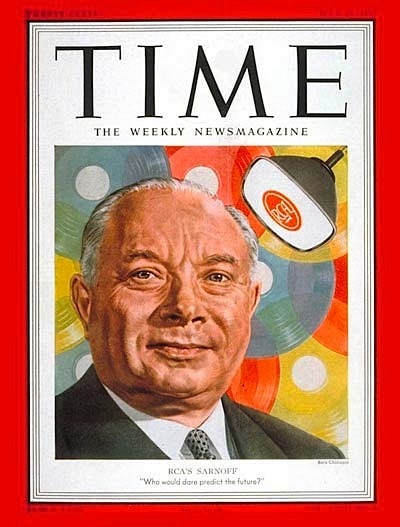
David Sarnoff
In 1931, David Sarnoff of RCA offered to buy Farnsworth’s patents for $100,000 (USD), with the stipulation that he become an employee of RCA, but Farnsworth refused. RCA later went on to threatened behind the scenes to put any body who did business with Farnsworth out of business.
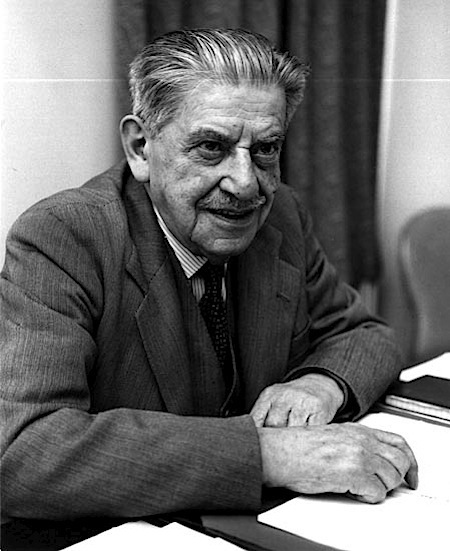
Meanwhile a Russian born electronic engineer Sir Isaac Shoenberg (1880–1963) headed a research group that developed, from 1931 to 1935, an advanced kind of camera tube called the Emitron. Shoenberg joined the Marconi Wireless and Telegraph Company in London and remained with the company through the merger that became EMI in the early 1930s.
In 1934, a more ambitious Australian attempt at television broadcasting occurred, aimed at an estimated 18 receivers around Brisbane. Starting off as a 30-line system, it expanded to 180 lines in late 1934. The remnants of this equipment sits in a storage area belonging to the Queensland Museum.
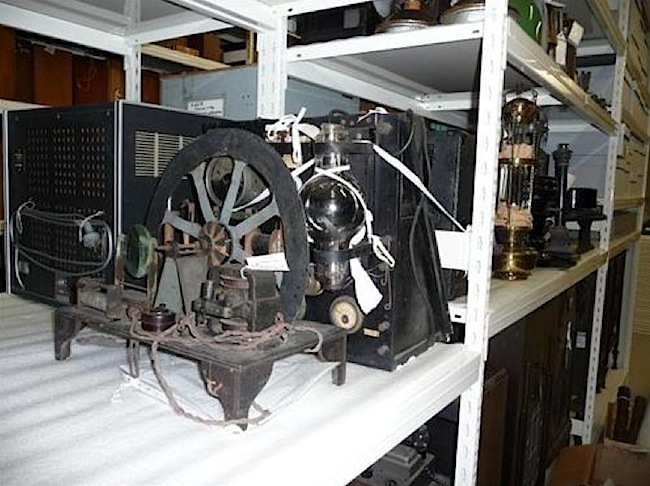
These early transmissions were granted a special license, and permission to conduct experimental television from the Wickham Terrace Observatory Tower, after the apparatus was set up by Thomas M. B. Elliott and Dr Val McDowall. The programs included news headlines, still pictures and silent movies such as the temperance film “Horrors of Drink”.
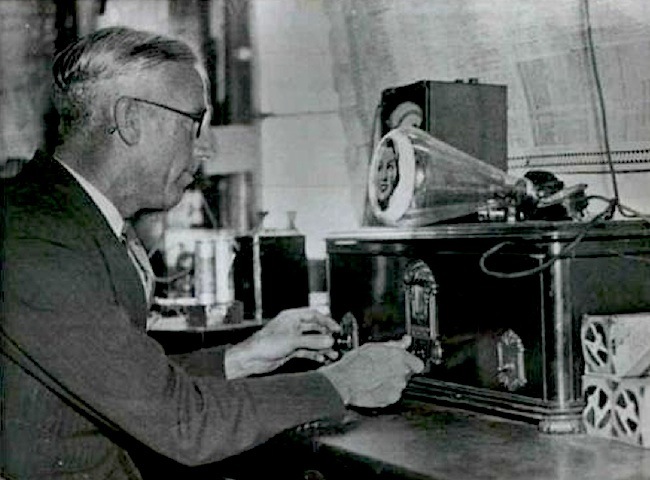
Elliott built the television transmitter using a wide variety of materials including Meccano set parts. A receiving set owned by advertising man Alan Campbell had a cathode ray screen that was 11cm wide. They continued to broadcast until the license was withdrawn following the outbreak of war in 1939. The group did not resume after the war.
1936 experiments by Blake Horrocks in WA
AMMPT members Ian Stimson and Richard Rennie, assisted by Walter House, have kindly provided details of the following early television experiments in Western Australia
In 1936, an electrical engineer and radio Ham, Blake Horrocks created Western Australia’s first workable television transmitting and receiving system, based on the Baird standard 30 line mechanical system.
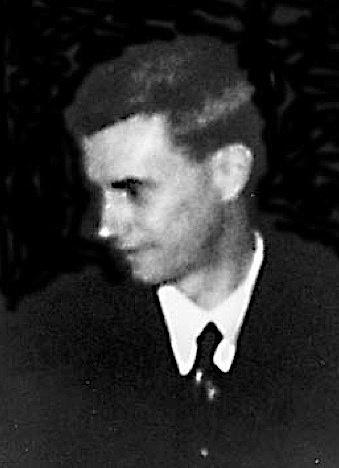
Blake Horrocks
Horrocks fabricated a Nipkow disc with 30 very small holes arranged in a spiral. The disc revolved at 750 rpm to work at 12.5 frames per second. He recorded the signals as tones on a Phonovision record turning at 78 rpm, for later replay. The system worked, though as expected from this early equipment, the results were poor. The first images were shadows of his own fingers but later magic lantern slides were used as the subject.
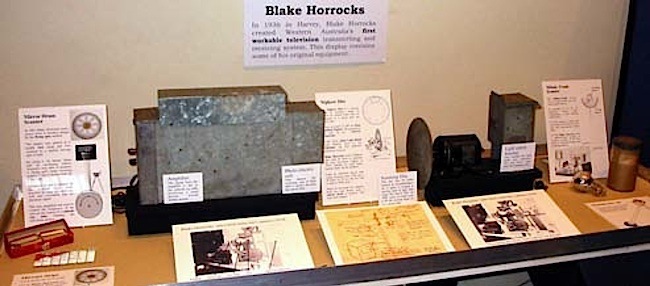
Remnants of Blake Horrocks’ Mechanical TV
This was to progress to 35 mm movie film on a telecine set-up he constructed in his shed. By 1937 he had progressed to a 45 hole Nipkow disc, followed by a 60 hole disc 18 inches in diameter. Despite having some initially difficulty with synchronisation, he progressed to a cathode ray tube receiver in 1938. Although the tube was only one inch in diameter, the image was good enough to be photographed. In 1939 he began experimenting with mirror drum scanners to produce an 88 line picture.
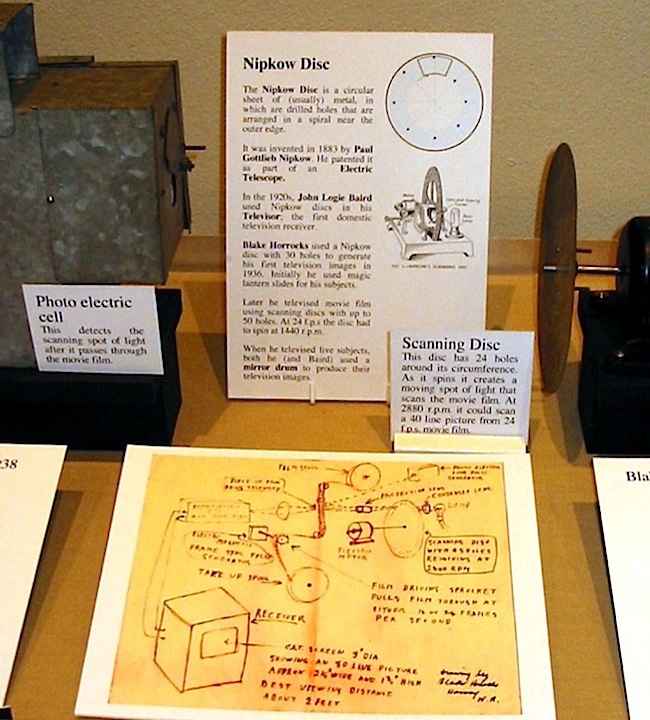
Diagram explaining Horrocks’ Telecine Unit
After the war he resumed experiments begun in 1943, but by then the mechanical systems had been superseded by electronic systems. In 1948 Horrocks’ final achievement was to give the first Public demonstration of electronic television in Western Australia. This was to the Perth Division of the Institute of Radio Engineers. Blake Horrocks later joined the Post Master General’s Department (PMG) at its radio transmitter 6WA in Wagin. His innovation and skills did not go un-noticed and he was invited to join Dr. Albert Seyler’s team at the PMG radio and television research laboratories in Melbourne. One of the projects he worked on was the development of fully functional videophone system in 1962 at a time when transistors were beginning to replace radio valves. Blake was to die a few years later.
In 2009, some of Horrocks’ original equipment was on display at the AMMPT “50 Years of WA TV exhibition” in the Fremantle Arts Centre. It was unfortunate that a considerable number of Blake’s early experimental models were discarded by him in Melbourne, telling his family that he thought no-one else would be interested in them.
Meanwhile the British were busy too and in 1932, James Dwyer McGee (1903-1987) and William Francis Tedham (1903-2003) of the British company Electric and Musical Industries Limited (EMI) built and tested their first experimental electronic camera tube in secret, for EMI was forbidden by an agreement with RCA from making electronic television camera equipment, although they were permitted to experiment with cathode-ray receivers. In 1933, the restriction on EMI was lifted, following which EMI went on to develop the Emitron tube. The first prototype Emitron camera tubes were produced in January 1934, as used in the BBC’s cameras at the Alexandra Palace studios, for the world’s first regular high-definition 405-line broadcasting service in 1936. A patent was issued in the USA in 1937.
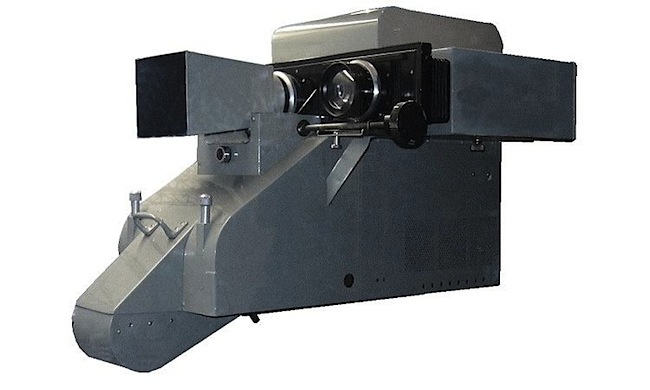
This restriction on EMI happened around the time RCA developed the Iconoscope, which produced a much stronger signal than Farnsworth’s Image Dissector. The Iconoscope was presented to the general public in a press conference in June 1933, but a patent was not issued until 1938, bearing a 1923 application date. Even though the original 1923 application by Zworykin simply could not work. There was also scant evidence that Zworykin ever built and tested it at that time.
240 lines, 24 frames per second, without interlacing were used for RCA’s 1933 field tests. The picture had good definition, but the flicker was quite noticeable. The following year (1934) the number of lines was increased to 343, with 60 fields and 30 frames per second, with interlace adopted.
Interestingly, some of the Iconoscope’s essential components can be traced to the Hungarian inventor Kalman Tihanyi, and EMI’s similar Emitron camera tube. EMI in Britain was an RCA cross-licensee.
RCA’s attorneys then went on to assert that the Iconoscope had priority over Farnsworth’s Image Dissector, and that Farnsworth’s patents infringed on Zworykin’s application.
Farnsworth mounted a challenge before the examiners of the U.S. Patent Office and RCA’s attorneys tried to prove that Zworykin had the idea first. RCA challenged Farnsworth’s claim that he had first thought of his approach to electronic television while he was a high school freshman in Rigby, Idaho. Then in court his former teacher Justin Tolman not only recalled clearly the day that his young student drew a series of diagrams on the blackboard, but drew from memory a simple sketch of an electronic tube, which turned out to be a precise replica of an Image Dissector. RCA made no effort to produce evidence of a tube from 1923 that would substantiate Zworykin’s claim. In conclusion, the patent office 1935 decision in Interference #64,027, states quite clearly “priority of invention awarded to Farnsworth.” RCA lost all the appeals and eventually capitulated in 1939 and accepted a license from Farnsworth for the use of his patents.
RCA’s Sarnoff finally agreed to pay Farnsworth royalties.
RCA had showcased its electronic television offerings to the public at New York World’s Fair on April 20, 1939. But it was not until September 1939, that RCA conceded to a licensing agreement concerning Farnsworth’s 1927 patent totalling $1 million.
The Iconoscope, and its English equivalent the Emitron, became the prime camera tubes in use for broadcasting from 1936 until 1946, when they were replaced by the RCA developed Image Orthicon tube. Though RCA started developing the Orthicon from 1937, whose performance was similar to the Image Iconoscope. The improved Image Orthicon was a considerable advancement. Earlier the British had made improvements to the Emitron by incorporating some elements of the Image Dissector camera tube, which they called the Super-Emitron. This new development was between ten and fifteen times more sensitive than the original Emitron and Iconoscope tubes, and was patented in 1934 (British Patent No. 446661).
The Image Orthicon and the Vidicon camera tubes also drew on Farnsworth’s patent for low-velocity electron-beam scanning, along with numerous other RCA-invented aspects. “Immy” was a common term for the early Image Orthicon tubes, and was put forward as the name for the Television Academy award statuette. The name was then modified to Emmy, as more appropriate for a female symbol.
The German company Fernseh demonstrated their 90 line studio equipment at the 1932 Berlin Radio Exhibition, where they broadcast film images from a mechanical Nipkow disc telecine unit, which was sent over a Telefunken short wave transmitter. Fernseh also supplied a Nipkow disc camera that generated a 120 line image of a head and shoulders. Also that year, Fernseh showed an intermediate film scanner, that used a motion picture film camera followed by rapid processing and film scanning.
Following a trip to Europe in 1934, Farnsworth secured an agreement in 1935 with Fernseh A.G. in Germany, related to his Image Dissector cameras, so that there was an exchange television patents and technology to speed development of television transmitters and stations in their respective countries. But the Image Dissectors were only used briefly, before being replaced by more sensitive camera tubes.
At the 1936 Berlin Radio Exhibition, Fernseh demonstrated a Farnsworth concept camera using his Image Dissector, whilst Telefunken demonstrated a camera influenced by RCA’s Iconoscope and EMI’s Super-Emitron.
The world’s first electronically scanned television service then started in Berlin in 1935, culminating in the live broadcast of the 1936 Summer Olympic Games from Berlin to public places all over Germany (whereas the BBC were broadcasting at a higher definition and more widely to the public who could afford receivers). In 1934, the German radio apparatus company Telefunken bought some patent rights from RCA to built the “Superikonoskop” tube in Germany, which in many ways was identical to the Super-Emitron. The Superikonoskop camera tube was then used by Telefunken in the historical TV transmission of the Olympic Games in Berlin 1936.
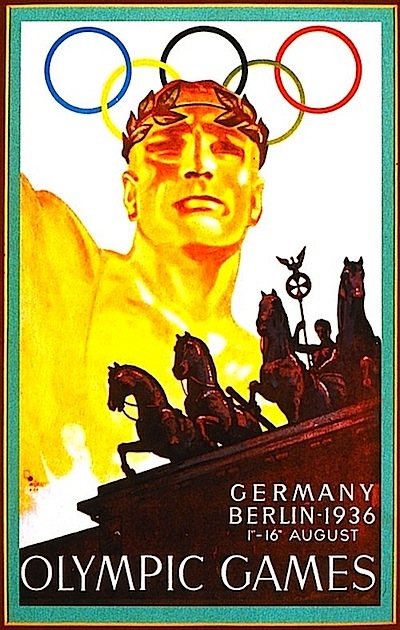
This was conveyed by Christine Heimprecht, in the German language “Fernsehkamera – Dr. Walter Bruch und die Olympiakanone”, which showed a picture of the Iconoscope camera used at the 1936 Berlin Olympic Games.
Fernseh overcame the Image Dissector’s need for very high light levels to perform adequately, by using a special van during the Berlin Games, that had a film camera on the roof which then fed the exposed film down into the vehicle for rapid processing, following which it was scanned for television just one minute later.
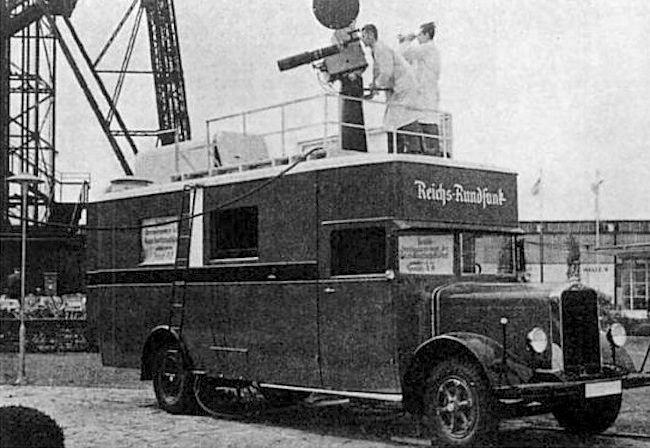
Apparently, only three electronic cameras were available for the games (according to ‘Television Under The Swastika’ – Unseen footage from The Third Reich – Spiegel TV 1999), so they were supplemented by the above Fernseh AG intermediate film system, in which motion picture film was fed into the van below, after it was exposed in the camera, where it was immediately developed, fixed, washed and given a preliminary dry. The film negative whilst barely dry, was scanned by a flying spot and turned into a positive for transmission over the air. The film was then given additional drying and wound on to a take-up spool, and sent to the archives where 285 rolls still survive today.
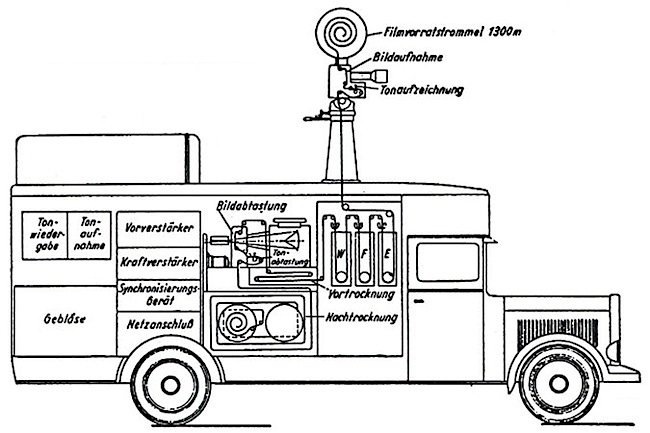
This system was not only used in Germany, but also by Baird in Britain, in his attempt to compete with the more superior EMI fully electronic system. This took place during the three months trial by the BBC of both television systems from November 1936 through January 1937.
For several years, the BBC had been broadcasting 30 line mechanical TV, using the Baird system. In 1935, the BBC assembled a committee to recommend what path it should take. The committee recommended that the BBC sponsor trial broadcasts by two systems, one by Baird, with 240 lines, and one by EMI with 405 lines. For three months, the systems were to be alternated on a weekly basis, to determine which was superior. A decision was made and regularly scheduled programs began in 1936 using the 405 line EMI system emanating from studios in Alexandra Palace, a building in North London, England, built in 1873 as a public centre of recreation, education and entertainment.

Alexandra Palace with transmitting tower to the right
Zworykin’s rudimentary video camera tube was called the Iconoscope and a precursor to the modern television picture tube was called the Kinescope. The RCA Victor company in the United States then poured huge resources into its development.
![]()
1931 Zworykin Iconoscope – patent diagram
![]()
RCA Iconoscope Camera Tube
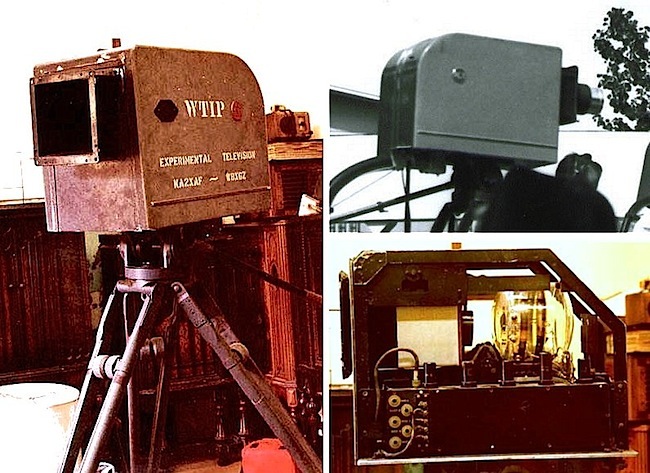
Experimental TV Iconoscope RCA Camera used at 1939 New York World’s Fair
During the 1930’s Zworykin continued to develop the cathode ray tube display, which evolved into the tubes used in RCA’s first commercial TV sets shown at the 1939 World’s Fair in New York . The National Broadcasting Company (NBC), formed in 1926 by the Radio Corporation of America (RCA), began regularly scheduled broadcasting at the same time.
The Columbia Broadcast System (CBS) was established in 1928, and entered the black and white era of television broadcasting in 1940. Then in 1941, the US government ordered NBC to divest itself of one of its two networks, which eventually gave rise to the American Broadcasting Company (ABC).
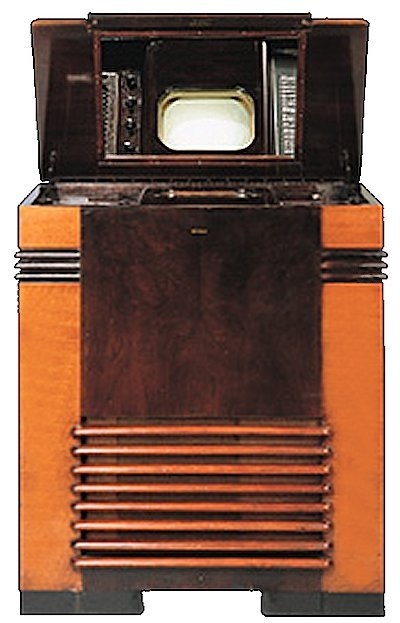
The 12″ mirror-in-lid TRK-12 was RCA’s first television to be sold to the public. Priced at $600.00, it was RCA’s most expensive yet most popular pre-war model.
The legal battle between Farnsworth and RCA would later become known as one of the great, tragic examples of legal and industrial force combining to crush a rightful patent owner, for even though Farnsworth won the case in 1935, he lost out in the end. Farnsworth’s basic patents expired in 1947 and World War II lasted from 1939 to 1945.
In 1939, the United Kingdom and Germany each had about 20,000 television sets when the war started.
World War Two interrupted the development of television. In the U.S. some broadcasting continued, but the manufacture and sale of sets stopped. In England, all broadcasting and TV manufacturing ceased until the end of the war. It was not until 1948-1949 that US families had accumulated enough savings and were eager to purchase homes, cars and other luxuries, that were denied them during the war. This saw the explosion of sets into the American marketplace, with the post-war sales boom in England followed a few years later.
When Europe resumed TV transmissions after WWII (i.e. in the late 1940s and early 1950s) most countries standardised on a 625-line television system. The three exceptions were the British 405-line system, which had already been introduced in 1936, the French 819-line system developed by René Barthélemy, and the American 525-line system.
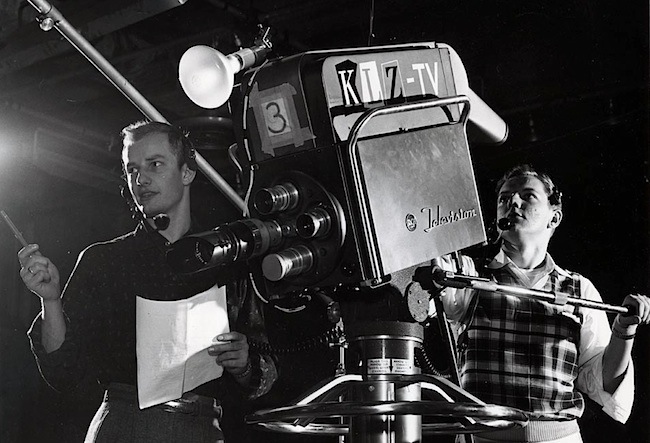
Meanwhile in France, things developed differently, when the French physicist Rene Barthlemy (1889-1954) became chief of the new research laboratory of television in 1928, where he produced 30 line Nipkow disc television receivers. By the end of 1934 his work with 60 line technology allowed the first official television broadcasting by France, which took place on April 26, 1935.
On December 2, 1935, Barthelemy broadcast his first 180 line television programs, using a mechanical camera and electronic receivers. In 1937 Barthelemy developed the Emyvisor CRT televisor sold by Emyradio.
This Model 95 television receiver displayed a 180-line picture, at 25 frames per second, on a 4 inch cathode-ray (picture) tube. A magnifying lens was used to increase the size of the picture to about 8 inches. This was a “vision-only” unit, which means there was no sound, a separate radio had to be used to receive the sound. Owners were advised to tune-in the sound first, then turn on the vision unit. Mr. Barthelemy made these sets under the trademark “Emyradio”.
1936 saw the end of the mechanical era of television in France, and the birth of the electronic cameras and receivers.
In 1941-42 work was started on a high definition 1,015 line system
During the 1940s Barthélemy reached 1015-lines and even 1042-lines. On November 20, 1948, François Mitterrand, the then Secretary of State for Information, decreed a broadcast standard of 819-lines; broadcasting began at the end of 1949 in this definition.
Part 6 tracks how television has evolved since the end of World War II with its spread through Britain, the United States and Europe until politicians in Australia started to take notice and contemplate how it should be introduced here.

When it arrived in the capitol cities between 1956 and 1959, all licences were grant to newspaper publishers. The Labor party was keen for Australia to adopt a regime similar to the BBC, whilst the Liberal and Country party government introduced a hybrid of commercial and government broadcasting institutions. Australian workers at first enjoyed the opportunity to participate in a television set manufacturing industry, until the Whitlam government killed it by removing the protective tariffs.







